|
Remember the mystery flea market find from the Netherlands I showed you two weeks ago? Elaine Cochrane wrote me an email to tell me that she had a similar piece from England. Hand-painted details with silk embroidery on a silk background. This is Elaine's piece: By now, Google was finally producing some useful results too! Auction websites list several pieces called 'silk embroidery sampler or tapestry' which look very similar to Elaine's piece. The very fine seeding stitches covering the background are called stipple work by the antique dealers. Pieces are either listed as of French or English origin. Some pieces are rather large and others are of the oval type seen above. The quality of the stitching differs widely, as do the materials used. Some use only silk threads, others add gold threads and chenille. If you would like to explore these auction listings for yourself, ask Google for 'Georgian silk embroidery'. Now what are these pieces and who made them? Well, thanks to the fabulous blog Austenonly I learned that they were made by women in the late 18th and early 19th centuries. It was a time when women did mostly not receive a sound academic education and were instead send to a ladies' academy. Here, the young daughters of the upper-class were taught ladies accomplishments such as etiquette, music and needlework. A famous woman who hated this type of education was Dr. Aletta Jacobs, the first Dutch woman to be enrolled at a university.
I am wondering if these fine ladies painted the background of these silks themselves. Or were they supplied with painted silks and then embellished them with stitches? In that case: who were the painters? It seems to me that it is quite a niche market and thus more likely that these painted silks were a side-kick of another industry. Your thoughts on that are greatly appreciated! With regard to the scene depicted on my flea market piece, Rachel from VirtuoSew Adventures had an interesting thought: what if it depicts gentry playing countryside? It was a fashionable past-time at the end of the 18th century. Most famous for the Hameau de la Reine; a peasant village built near Versailles for Queen Marie-Antoinette. She and her court could live the simple life there. Quite a possibility. Comparing Elaine's piece and the pieces on the auction sites on the one hand and my piece on the other, does show that the style is quite different. The general idea is the same: silk embroidery on a painted silk background. An explanation for the difference in style could be its Dutch origin or my piece could be of a different (probably younger) date. Unfortunately, I am not able to find any Dutch finds on the internet. So if there is anybody out there with a suggestion where I could go and ask for information, please leave a comment!
1 Comment
When my parents visited, they brought with them this charming embroidered flea market find. I've never seen anything quite like it. As we were all a bit puzzled as to what it was, we decided to take it apart. As it had already some damage, we didn't feel too guilty about it :). Here are the front and the back of it. The glass is very dirty and you can probably just make out that the image has a horizontal line of damage just below the gentlemen's right knee. From the different layers of tape on the back, we could see that the frame had been opened before. Possibly because they say that some lucky people find treasure in them :). We were in for a surprise when we opened the frame. Underneath the embroidery was a picture from composer Franz Liszt (1811-1886)! As to the embroidery: it is glued to cardboard and sits in a simple frame with roughly cut glass. The embroidery has been glued to the cardboard first and then both were roughly cut out as testified by the rough edges. A closer look at the embroidery reveals that it has been stitched on what looks like a printed silk fabric with a pile. Not a heavy velvet, but more a chiffon velvet. It is very, very thin. The stitching has been done with a fine shiny silk thread with a soft twist. Very fine details, like the men's necktie, have been stitched with a finer and more firmly twisted thread. Likely silk too. Details are added with a fine gilt twist and the buttons on the men's jacket are made of tiny gilt spangles stitched down with a tiny facetted gold metal bead. The flowers on the hats are some sort of embossed metal (high lead content) pieces that once were painted or glazed. There are a number of different stitches used in this charming piece. The men's jacket, waistcoat and breeches, as well as his hat (a bicorne), both pairs of shoes, the lady's bodice and the bow on her hat are stitched in a form of satin filling stitch. His cuffs and her sleeves are stitched with buttonhole stitch. Additional details on her upper skirt consist of French knots. It is all quite detailed! However, it seems that the stitch quality is a bit better and far more elaborate on the male.
I think that the clothing of the pair places them in the 18th century, but I am by no means an expert on this topic. The gentlemen wears healed buckled shoes, a bicorne head (apparently folded the Dutch way), a jacket, waistcoat and breeches that fit snugly around the knee. He also wears a short powdered wig typical of the time. It all marks him out as a true nobleman. The woman puzzles me a bit. What kind of robe is that? It has a corset with a stomacher, full short sleeves, a voluminous upper skirt and a narrow under skirt. Or could it be that there is a hidden meaning to it all? Does she show him her skirts to let us know what they have been up to? The grapes could point into this direction as well. Questions, questions, questions! Would love to hear your thoughts on the fashion of the pair. But that's not all. The materials used are not every day embroidery supplies. My guess is that the background silken fabric was originally a piece of 'wallpaper'. Did it come out of a stately home during remodeling of a room? Did the lady of the house confiscate a well-preserved bit and stitch on it? And when was this done? Likely 19th or more 20th century? More questions! Please do leave your thoughts in a comment below! Looking forward to solve this little flea market mystery :). |
Want to keep up with my embroidery adventures? Sign up for my weekly Newsletter to get notified of new blogs, courses and workshops!
Liked my blog? Please consider making a donation or becoming a Patron so that I can keep up the good work and my blog ad-free!
Categories
All
Archives
July 2024
|
Contact: info(at)jessicagrimm.com
Copyright Dr Jessica M. Grimm - Mandlweg 3, 82488 Ettal, Deutschland - +49(0)8822 2782219 (Monday, Tuesday, Friday & Saturday 9.00-17.00 CET)
Impressum - Legal Notice - Datenschutzerklärung - Privacy Policy - Webshop ABG - Widerrufsrecht - Disclaimer
Copyright Dr Jessica M. Grimm - Mandlweg 3, 82488 Ettal, Deutschland - +49(0)8822 2782219 (Monday, Tuesday, Friday & Saturday 9.00-17.00 CET)
Impressum - Legal Notice - Datenschutzerklärung - Privacy Policy - Webshop ABG - Widerrufsrecht - Disclaimer

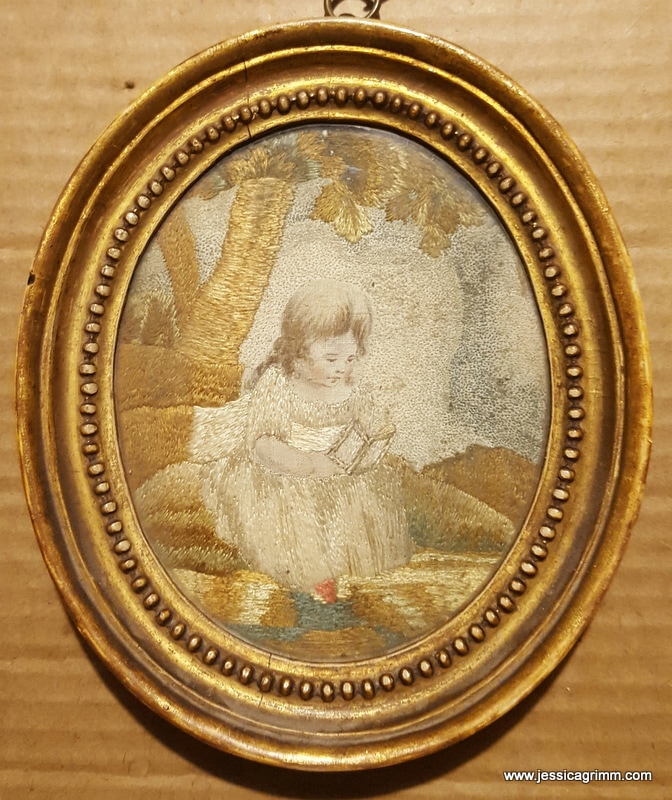
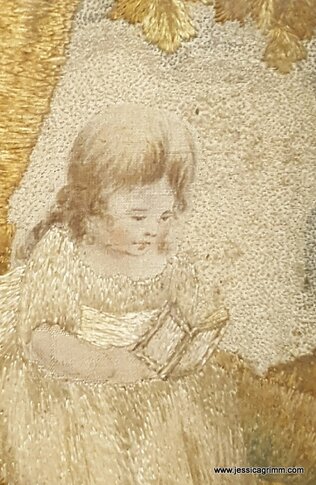
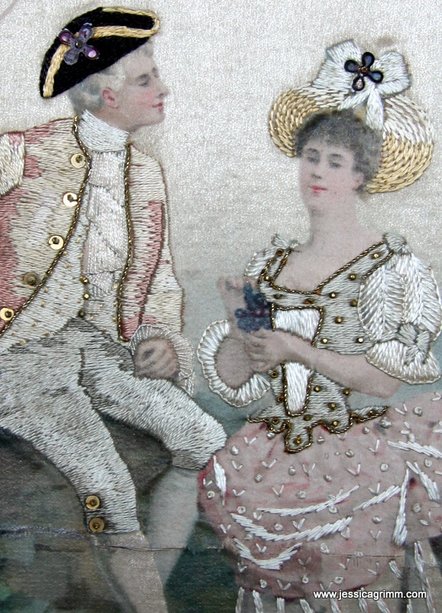
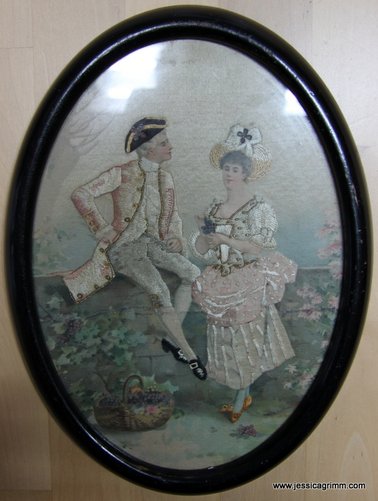
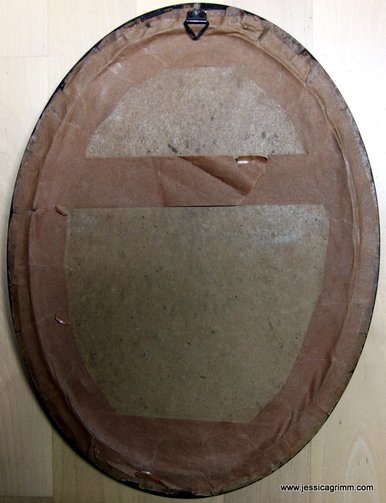
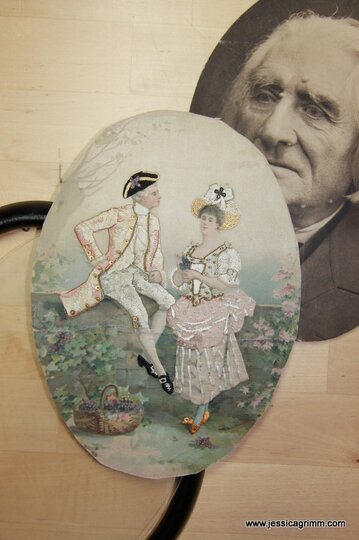
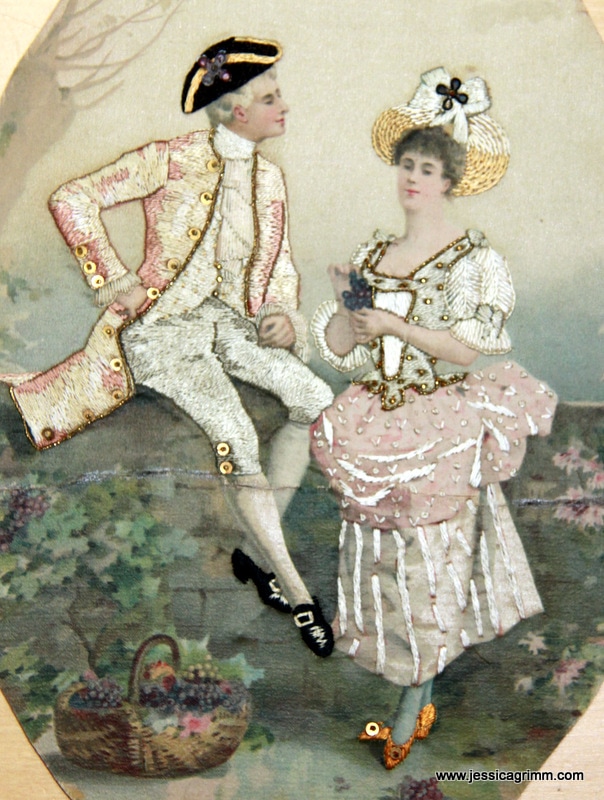
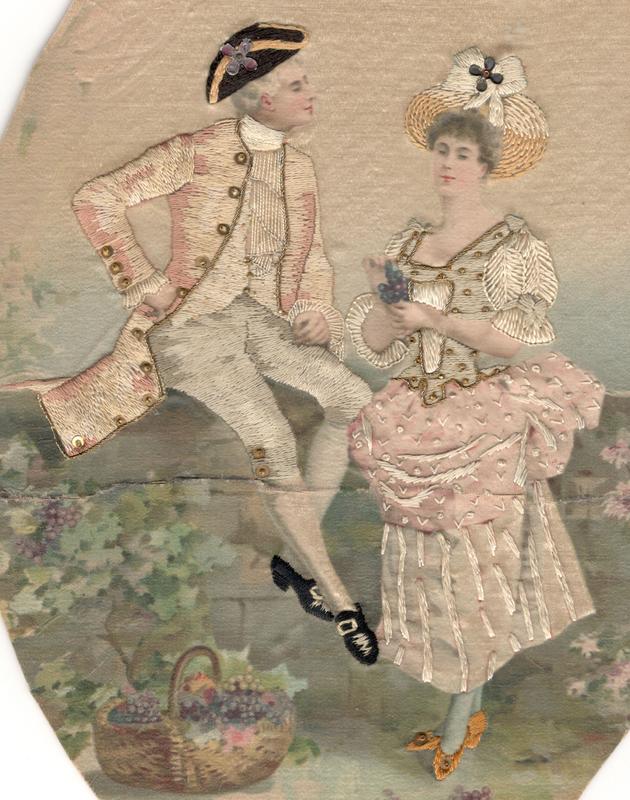





 RSS Feed
RSS Feed